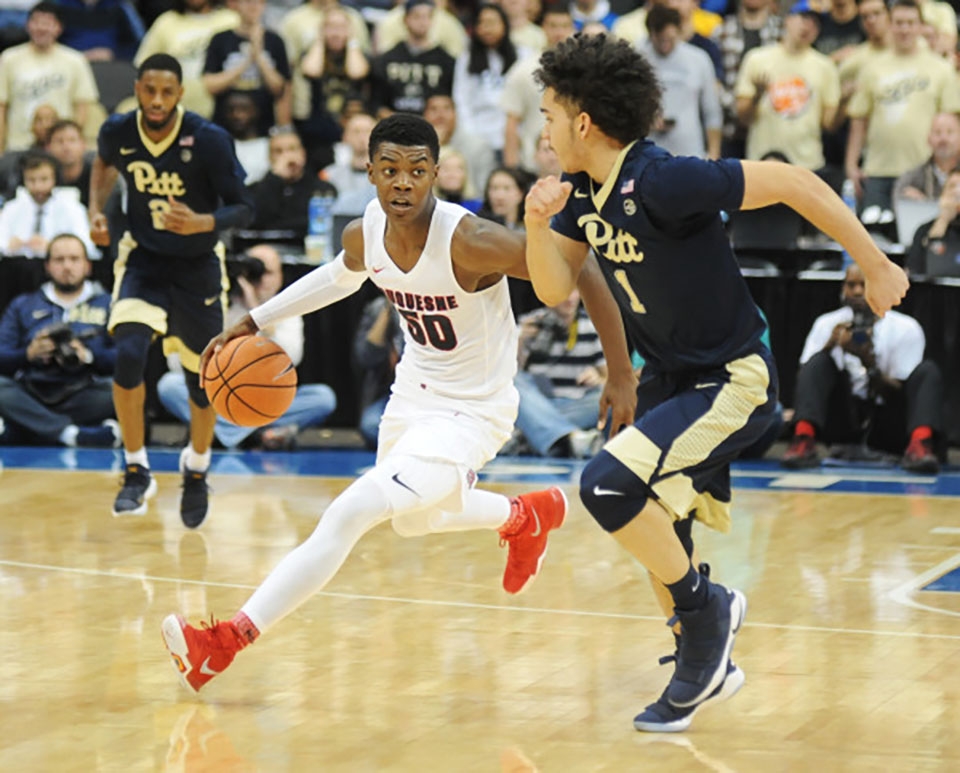
By Duke Staff
The Duke doesn’t write stories “just for clicks.”
Maybe that’s not entirely true. Like any news outlet, The Duke and its staff want people to read our stories. It’s frustrating to pour your time and effort into something that only eight people view on www.duqsm.com. When you write something, you write it so it will be read, not so it will sit on a newsstand and collect dust. However, The Duke is very lucky not to rely on pick-up rates and website clicks for our funding. While we earn some funding from advertising sales, we also receive a budget from Duquesne University. This means that we are not under pressure to generate a certain amount of views for our stories, and we have great freedom in which stories we decide to cover. In choosing which events and stories are newsworthy, we adhere to the following five elements of newsworthiness: proximity, prominence, timeliness, consequence and impact.
Proximity means asking the question, “Is this related to the Duquesne community?” You’ll notice that The Duke does not do many stories on national news or even local politics, unless those stories have a direct impact on Duquesne students. If we have to choose between a story about the Trump administration and a story about traffic tickets for Duquesne commuters, we will always choose the latter, because it hits closer to home.
Prominence means asking the question “Is the person involved a public figure?” A public figure is someone who is well-known within his or her community or profession. For example, Duquesne President Ken Gormley would be considered a public figure to the Duquesne community, but is not well-known in Fujiang, China. Someone in a position of authority or working as a public servant will usually meet this definition.
Timeliness is self-explanatory. It doesn’t make sense to write a story today about a research grant received by the Bayer School in 2008, unless that grant has recently led to another current event. However, “timeliness” also means publishing breaking news as quickly as possible. In general, news organizations, including The Duke, prefer to publish a story sooner rather than later, under the assumption that the public values being informed in real time of ongoing events. This can become a problem when news organizations publish inaccurate information because they did not take the time to fact-check their story. At The Duke, we try to balance the urge to publish breaking news with a thorough verification process.
Consequence means asking “Does this actually affect the lives of our readers?” There are stories that have popped up in our newsroom that are salacious but not really relevant to the Duquesne community. If it is not clear that that a story has concrete consequences for Duquesne, we will likely not pursue it.
Finally, impact, which is similar to consequence, means asking the question “How many people does this event affect?” Stories that impact large segments of the Duquesne body will receive more attention and are more likely to be covered than those that only affect a few students. They are also more likely to be featured on the front page of The Duke and to be heavily promoted on social media.
Sometimes, stories that meet these criteria are positive, uplifting stories about the successes of students and faculty at Duquesne. At other times, stories are about low moments for the Duquesne community, or they shine a light on problems that still need to be resolved. Whether a story is positive or negative does not come under consideration at The Duke in evaluating its newsworthiness. The Duke is not a mouthpiece for Duquesne University — we have no obligation to put the university in a good light. Alternately, we also have no reason to create problems where there are none, since we do not depend on views or “clicks” for our bread and butter. And at all times, we at The Duke keep in mind our foremost duty: to be a reliable and relevant source of credible information to the Duquesne community.



